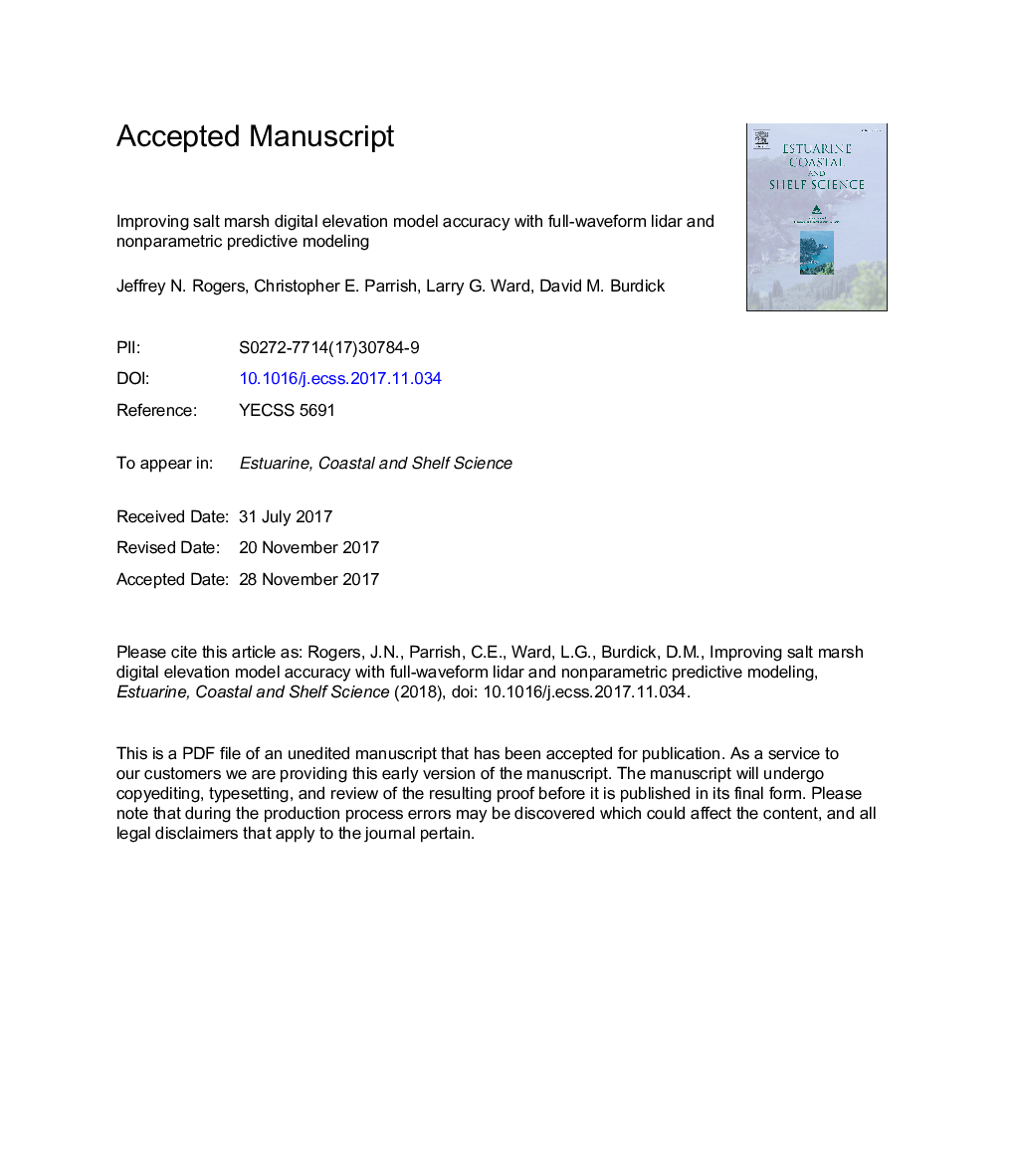| کد مقاله | کد نشریه | سال انتشار | مقاله انگلیسی | نسخه تمام متن |
|---|---|---|---|---|
| 8885012 | 1626600 | 2018 | 58 صفحه PDF | دانلود رایگان |
عنوان انگلیسی مقاله ISI
Improving salt marsh digital elevation model accuracy with full-waveform lidar and nonparametric predictive modeling
ترجمه فارسی عنوان
بهبود دقت مدل ارتعاش دیجیتالی نمک با مدل لیزر موج شکن و مدل پیش بینی غیر
دانلود مقاله + سفارش ترجمه
دانلود مقاله ISI انگلیسی
رایگان برای ایرانیان
کلمات کلیدی
موضوعات مرتبط
مهندسی و علوم پایه
علوم زمین و سیارات
زمین شناسی
چکیده انگلیسی
Salt marsh vegetation tends to increase vertical uncertainty in light detection and ranging (lidar) derived elevation data, often causing the data to become ineffective for analysis of topographic features governing tidal inundation or vegetation zonation. Previous attempts at improving lidar data collected in salt marsh environments range from simply computing and subtracting the global elevation bias to more complex methods such as computing vegetation-specific, constant correction factors. The vegetation specific corrections can be used along with an existing habitat map to apply separate corrections to different areas within a study site. It is hypothesized here that correcting salt marsh lidar data by applying location-specific, point-by-point corrections, which are computed from lidar waveform-derived features, tidal-datum based elevation, distance from shoreline and other lidar digital elevation model based variables, using nonparametric regression will produce better results. The methods were developed and tested using full-waveform lidar and ground truth for three marshes in Cape Cod, Massachusetts, U.S.A. Five different model algorithms for nonparametric regression were evaluated, with TreeNet's stochastic gradient boosting algorithm consistently producing better regression and classification results. Additionally, models were constructed to predict the vegetative zone (high marsh and low marsh). The predictive modeling methods used in this study estimated ground elevation with a mean bias of 0.00Â m and a standard deviation of 0.07Â m (0.07Â m root mean square error). These methods appear very promising for correction of salt marsh lidar data and, importantly, do not require an existing habitat map, biomass measurements, or image based remote sensing data such as multi/hyperspectral imagery.
ناشر
Database: Elsevier - ScienceDirect (ساینس دایرکت)
Journal: Estuarine, Coastal and Shelf Science - Volume 202, 5 March 2018, Pages 193-211
Journal: Estuarine, Coastal and Shelf Science - Volume 202, 5 March 2018, Pages 193-211
نویسندگان
Jeffrey N. Rogers, Christopher E. Parrish, Larry G. Ward, David M. Burdick,
